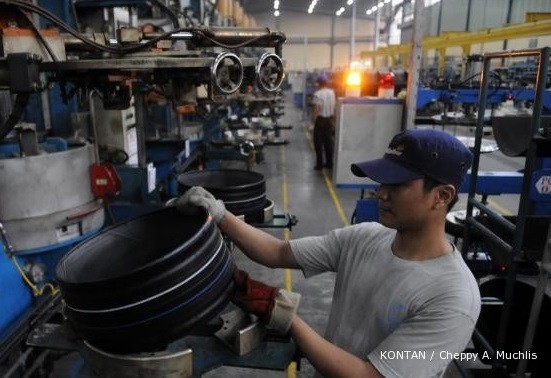Popular Reads
Top Results
Can't find what you're looking for?
View all search resultsPopular Reads
Top Results
Can't find what you're looking for?
View all search resultsRobotics captivates young talent
Mister Roboto: Andhika Hamizan Nugroho shows off his creations as he takes part in the 2018 Indonesia Youth Robotic Competition in South Tangerang, Banten
Change text size
Gift Premium Articles
to Anyone
M
ister Roboto: Andhika Hamizan Nugroho shows off his creations as he takes part in the 2018 Indonesia Youth Robotic Competition in South Tangerang, Banten. He was one of the children competing in the creative maker category. (TJPImages/Ben Latuihamallo)
Every afternoon, Hugo Tidar teaches small classes of teenagers at the Robotics Education Center, an after-school robotics course in Kemang, South Jakarta. He trains the children to construct simple robots and create their programs out of Lego kits.
The robots the children create come in various forms — a small tank, a smart mousetrap, a factory conveyor and a currency exchange machine. During a regular test, participants are assigned to make a machine, without the instructor providing a detailed description about its construction, or a picture.
“If they can’t do it, the teachers will show them a robot model and ask them to build their own version, but still without any instruction,” Hugo says. If they fail to build one, they will get some guidance. If they still fail, they will be given an instructional video.
The participants, of course, will have to take the lessons they need before they receive assignments to make “sophisticated” machines.
There are three main levels in robotic courses: basic, intermediate and advanced. The basic level is open to children as young as 4 years old. They learn how to build a mosaic and simple robots. Later on, they will learn how to build more complex machines without programming. At the advanced level, they will learn a programming language and integrate it into the robots.
The thought of a complex coding language might be intimidating for some people, but in the robotics courses the young learners use a visual programming language, meaning they don’t have to type textual commands as real programmers do. They only need to drag and arrange icons to make a program.
In Indonesia, robotics courses started to proliferate in the late 2000s. As the interest in robots grew, so did robotics courses, says Gunawan Tunas, the founder of the CreativKids robotics course franchise.
More schools are becoming aware of the growing demands for science, technology, engineering, arts and mathematics (STEAM). However, since robotics is not part of the national curriculum, students get the lessons as “local content”, which is designed specific to region and not prescribed in the curriculum, or as extracurricular activities at school.
Robotics courses like CreativKids offer their services to parachute robotics teachers into schools through their extracurricular activities.
In the United States, robotics has long been seen as a means to teach problem-solving and critical thinking to young children with many options of coding toys and gadgets available so children can construct and program the robots right at home.
Many secondary schools around the globe have incorporated robotics into their lessons to equip their students for the massive automation occurring across all industries. This is part of the attempt to prepare students to take jobs related to technology.
In Indonesia, many students discover robotics through the extracurricular activities at their schools but think that they need to devote more time to practice building and programming robots. Some don’t have access to robotics at their schools and it is usually their parents who send them to the robotics courses.
Usually parents look for information about robotics on the internet, or they might have heard about courses from friends and relatives, or sometimes they find out anything about robotics from competitions.
“These parents want their children to have creativity and skills in technology,” Gunawan says. “They also prefer to occupy their children with positive activities, instead just playing mobile games all day.”
Some students completing the robotics courses continue to study mechanical engineering or computer coding at university. But others, who start robotics solely as a hobby, end up choosing a college major completely unrelated to robotics.
“Robotics courses are not exclusively for children wanting to be robotics engineers,” Gunawan says, adding that learning robotics can help children exercise their logical thinking skills and creativity through technology.










